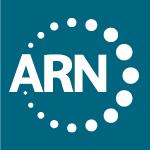Inclusion of Rehab Concepts as a Component of Generic Content in BSN Programs
The Association of Rehabilitation Nurses (ARN) recognizes the need to include basic rehabilitation concepts within the curriculum required of students pursuing a Bachelor of Science Degree in Nursing (BSN).
Current Status:
Changes in the healthcare environment have and will continue to alter what should be minimum knowledge required for graduation from nationally accredited BSN programs. As patient needs and practice environments for nursing continue to change, it is critical for graduating nurses to have a broader understanding of the basic principles underlying the specialty practice of rehabilitation.
Rationale
The purpose of this position statement is to delineate the rationale behind inclusion of basic rehabilitation concepts and interventions into the curriculum of BSN programs.
History of Specialty Practice Education
Inclusion of specialty practice education within BSN educational programs is not a new concept. Since the inception of the "trained" nurse in the 19th century, the curriculum of such programs has evolved over time reflecting societal changes and the advancement of both medical and nursing practice. As nursing education expanded into institutions of "higher learning," curricula further evolved. These initial programs generally included educational content in medical / surgical, public health nursing, including maternal, and child health care. By the early 1930s and 1940s, BSN curricula included in-hospital obstetrics, psychiatric nursing, and the new specialty of pediatrics. By the late 1960s, most BSN programs had also included principles of critical care nursing.
Recommendation:
Rehabilitation Concepts—Consistent with General Nursing Beliefs and Trends
Incorporating basic rehabilitation content and techniques into nursing education should continue to be included. Range of motion activities, bowel and bladder Intervention methods, and ambulation techniques have been a cornerstone of most nursing curricula for both fundamental and beginning medical surgical nursing for decades. Students are currently taught discharge-planning starts on admission, which includes plans for transfer to the next level of care. These nursing students are taught resources and levels of care required for their patients past the very brief acute in-patient phase. It is expected they will be able to function within inter-professional teams (Rehabilitation Nursing Standards Task Force, 2014).
As technological advances of maintaining life have improved, individuals are surviving debilitating injuries and diseases, which they may not have previously survived. Of special note are veterans returning from war with disease and/or injury. Survival of these war-related conditions often leaves patients with various levels of limited functioning. Recognizing and supporting the ongoing needs of these individuals is an essential component of basic nursing practice. The education of the BSN nurse, therefore, should be inclusive of the role of the nurse in rehabilitating patients and families.
Rehabilitation is one of the clinical nursing specialties that focus on holistic nursing care. In fact, the basic concepts of rehabilitation reflect a philosophy consistent with the holistic nature of nursing. The commitment is to assist the individual to maintain independence beyond hospitalization (ARN, 2013). The goals for preventing complications; restoring and maximizing function, including self-esteem and quality of life; and community re-integration are congruent with inter-professional case management. Rehabilitation nursing concepts support much of what is expected of nurses practicing in various community-based settings and restorative programs in skilled nursing facilities; in caring for developmentally disabled and dementia patients; and in management of chronic diseases. Rehab is a specialty practice that acknowledges inter-professional management of acute and chronic disabilities and disorders, in collaboration with patient and the caregiver/family, to achieve specific measurable outcomes.
Benefits to the Profession and the Individual Practitioner
Integrating basic concepts of rehabilitation nursing within the BSN program assists in accomplishing the following:
Strengthens the relationship between prevention of complications and the overall health of the patient in both the acute and chronic phases of disease management
Increases an appreciation for assisting the patient and caregiver/family to mobilize resources to promote total well being
Promotes the importance of support for normal psychosocial responses to illness or disability as healthy and appropriate
Emphasizes the positive perception of individuals as whole beings with the ability to manage independence within the limits of their disability
Encourages the role of nursing practice beyond acute care by emphasizing preventive support and life-long adaptation
Promotes the importance of inter-professional collaborative care (Vaughn, 2019).
Updated by the Continuing Education Provider Unit in 2024.
References:
Association of Rehabilitation Nurses (ARN). (2013). The Essential Role of the Rehabilitation Nurse in Facilitating Care Transitions: A White Paper by the Association of Rehabilitation Nurses, Executive Summary, Chicago, Il.
Rehabilitation Nursing Standards Task Force. (2014). Standards and Scope (6th Ed.). Association of Rehabilitation Nurses. : Chicago, IL.
Vaughn, S. (Ed.). (2019). The Specialty Practice of Rehabilitation Nursing: A Core Curriculum
(6th 8th Ed.). Glenview, IL: Association of Rehabilitation Nurses.
The Association of Rehabilitation Nurses (ARN) recognizes the need to include basic rehabilitation concepts within the curriculum required of students pursuing a Bachelor of Science Degree in Nursing (BSN).

